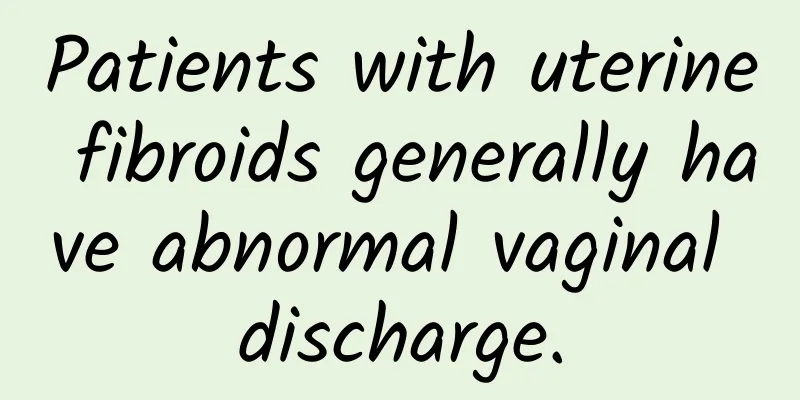What is the chance of spontaneous abortion in cervical pregnancy?

|
The chance of spontaneous abortion in cervical pregnancy is not high, because cervical pregnancy is a rare and dangerous type of ectopic pregnancy. Since the embryo implants in the cervix, which has a rich blood supply and is prone to heavy bleeding, the possibility of spontaneous abortion is low and usually requires medical intervention. Early diagnosis and timely treatment are crucial to avoid serious complications. 1. Causes of cervical pregnancy The mechanism of cervical pregnancy is not yet fully understood, but it is generally believed to be related to the following aspects: -Genetic factors: Those with a family history of ectopic pregnancy may be at higher risk. - Pathological factors: such as cervicitis and cervical injury (such as sequelae of previous pregnancies or intrauterine operations) may change the cervical tissue structure and provide abnormal implantation conditions for the embryo. -Surgical history: including repeated curettage, cervical electrothermal resection, etc., which may cause deformation or adhesion of the cervical canal, posing a hidden danger to cervical pregnancy. 2. The chance of spontaneous abortion in cervical pregnancy -It is difficult for the embryo of cervical pregnancy to be expelled by itself, because the cervix has a special structure and the implantation site has rich blood supply, so the embryonic tissue is often difficult to fall off. In most cases, the patient will experience heavy bleeding before spontaneous abortion, which can easily endanger life safety. -The chances of spontaneous abortion are low and most cases require medical intervention. 3. Treatment of cervical pregnancy -Drug treatment: The use of methotrexate (MTX) is a common conservative treatment for people who do not have heavy bleeding in the early stage, with the aim of inhibiting embryo growth and causing it to resorb. -Surgical treatment: If the situation is critical, hysteroscopy or curettage can be chosen, and cervical compression or suture measures should be taken to stop bleeding. -Interventional embolization: It is a modern minimally invasive treatment method that stops bleeding by cutting off the blood supply to the uterine artery and promotes embryo shrinkage. 4. Prevention and care of cervical pregnancy -Reduce cervical damage: avoid frequent artificial abortions, and pay attention to follow-up examinations and rehabilitation treatment after surgery. -Regular gynecological examinations: timely detection of underlying diseases such as cervicitis, and active treatment to reduce related risks. -Pre-pregnancy consultation and monitoring: Women with a history of adverse pregnancy should have their uterine health assessed before pregnancy and have regular prenatal checkups during early pregnancy to rule out the possibility of ectopic pregnancy as early as possible. Although the chance of spontaneous abortion in cervical pregnancy is low, timely medical intervention is the key to dealing with this special pregnancy. When abnormal pregnancy symptoms occur, such as heavy vaginal bleeding, persistent abdominal pain, etc., you should go to the hospital for examination immediately to avoid serious complications. |
<<: What are the causes of uterine cysts?
>>: How to treat irregular menstruation and polycystic ovary
Recommend
The dangers of mild cervical hypertrophy
Mild cervical hypertrophy may cause discomfort. I...
TCM tips for epidemic prevention: Drinking epidemic prevention tea and practicing Ba Duan Jin can increase immunity and boost vitality
In the post-epidemic era, when a new life with ep...
Will cervical erosion affect fertility? How should women diagnose cervical erosion?
Although cervical erosion is a common disease, it...
What are the medicines for treating ovarian cysts?
What are the medicines for treating ovarian cysts...
What causes bleeding during sexual intercourse in women?
Many female friends must have experienced bleedin...
Patients must pay more attention to the common symptoms of uterine fibroids
In recent years, more and more people have been s...
Want to know the correct way to relieve dysmenorrhea?
I believe that all fairies have a say in the pain...
Can patients with endometriosis eat donkey-hide gelatin? Yes, you can.
Endometriosis is a disease in which the endometri...
Feeling loose and flabby all over and weak in the abdomen after giving birth? The key to change is here...
Pregnant women can exercise, and postpartum women...
Things to note about uterine effusion
Uterine effusion is a manifestation rather than a...
How to best treat pelvic effusion?
Pelvic effusion may make many women feel troubled...
Social factors causing ovarian cysts
The occurrence of diseases is often caused by var...
Sometimes the early symptoms of uterine fibroids are accompanied by a feeling of falling
Most early symptoms of uterine fibroids are disco...
How to treat women's habitual miscarriage
Many women who have an unexpected pregnancy are c...
Will the infusion delay menstruation?
Infusions do not usually delay menstruation, but ...









